Nationality France | Name Aime Morot | |
 | ||
Full Name Aime Nicolas Morot Died 12 August 1913Dinard, France Known for Drawing, painting, sculpturing Notable work Les Ambronnes, 1879; Le bon Samaritain, 1880; Rezonville, 1886; Reischoffen, 1870, 1889; Mademoiselle Madeleine Gerome, 1890; Monsieur Edouard Detaille, 1899; Monsieur Gustave Eiffel, 1905; Ernest Hebert, 1905 | ||
Aimé Nicolas Morot (1850–1913) was a French painter and sculptor in the Academic Art style.
Contents
- Biography
- Military paintings battle scenes
- Society portraits and animals
- International travel
- Media
- Colour palette and painting technique
- Paintings
- Sculptures
- References
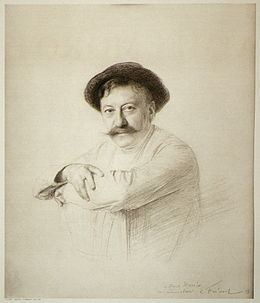
Biography
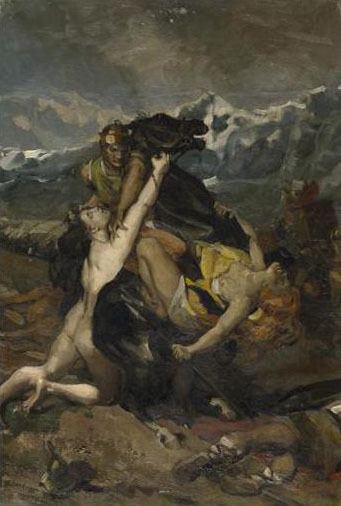
Aimé Nicolas Morot was born in Nancy on 16 June 1850, where at age 12 he started his studies in drawing, painting and gravure printing at l'Ecole Municipal de Dessin et de Peinture de Nancy under Mr. Thiéry and the director of the school Charles Sellier. He continued his study in Nancy until the late 1860s and subsequently attended the atelier of Alexandre Cabanel at the École Nationale Supérieure des Beaux-Arts in Paris, but could not study in the noisy environment of Cabanel's atelier and left after having received two corrections by Cabanel. In the next two years he continued his studies independently studying in the Jardin des Plantes, where he developed his skills in observing and portraying animals. Despite his lack of attendance at the École, he won the Grand Prix de Rome in 1873 with his first submission, the Babylonian Captivity (Super Flumina Babylonis), which is currently in the collection of the École des Beaux-Arts in Paris, and can be viewed upon request.
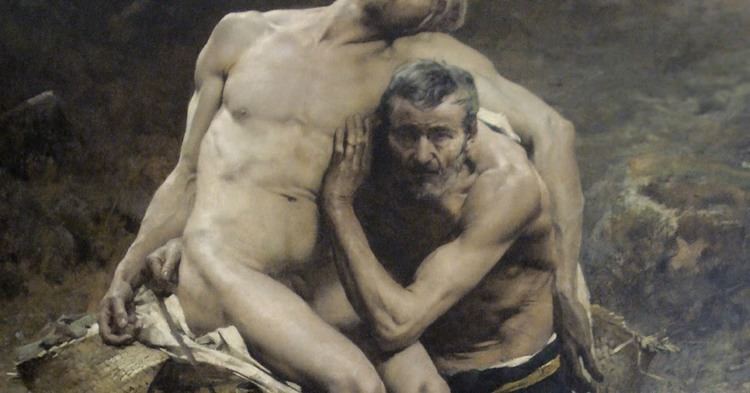
The fellowship allowed him to travel to Italy and become a resident of the Villa Medici, where the French Academy in Rome was housed. Morot rarely set foot in his atelier in the Villa Medici, but produced paintings in a regular fashion anyway. His first submission to the Salon de Paris awarded him a third-class medal for the painting Spring (Printemps) in 1876. In 1877 He was awarded a second-class medal for Médée, a first-class medal in 1879 for Les Ambronnes and the Medal of Honour for The Good Samaritan in 1880, competing against Joan of Arc by the realist painter Jules Bastien-Lepage, who also studied under Cabanel. In Rome, he worked with a model named Victoria, who posed for his 1877 painting of Médée.
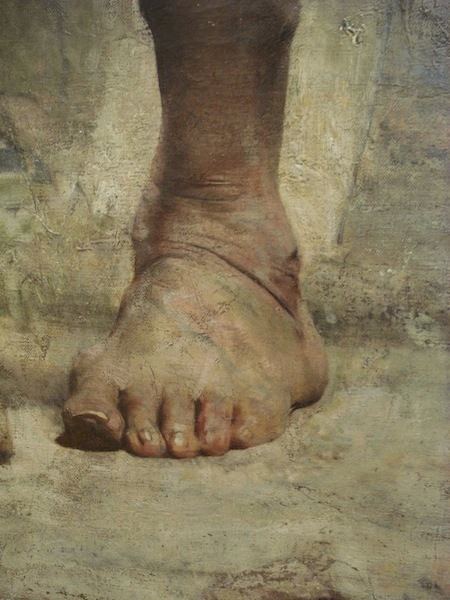
He returned to Paris in 1880, where he met painter Jean-Léon Gérôme and married Suzanne Mélanie Gérôme (1867-1941), one of the painter's four daughters, at the Mairie Drouot (Paris 9eme Arrondissement, civil) and in the Sainte-Trinité church in 1887. His daughter Denise Morot was born in the late 1890s. Suzanne Morot modelled for paintings in 1897 and, together with her daughter, in 1904. The family lived in a townhouse at 11 rue Weber in Paris, of which the garden resembled a zoo housing snakes, lions, panthers, leopards and other exotic animals.
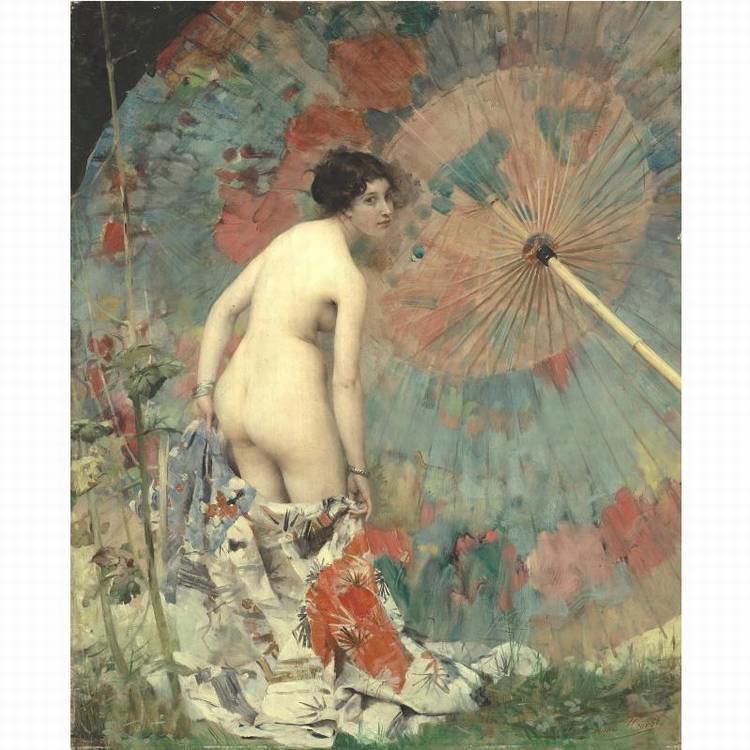
In the 1880s, Morot worked at the Académie Julian, where he was a colleague of William-Adolphe Bouguereau (1825-1905) with whom he co-supervised the British cartoonist and illustrator Sir Leonard Raven-Hill (1867-1935) in 1885 and 1886. After Gustave Moreau's death in 1898, he led Moreau's studio at the Institute. Theodor Pallady (1871-1956) and Gaston H. Boucart (1878-1962), former pupils of Gustave Moreau, continued their studies under Aimé Morot.
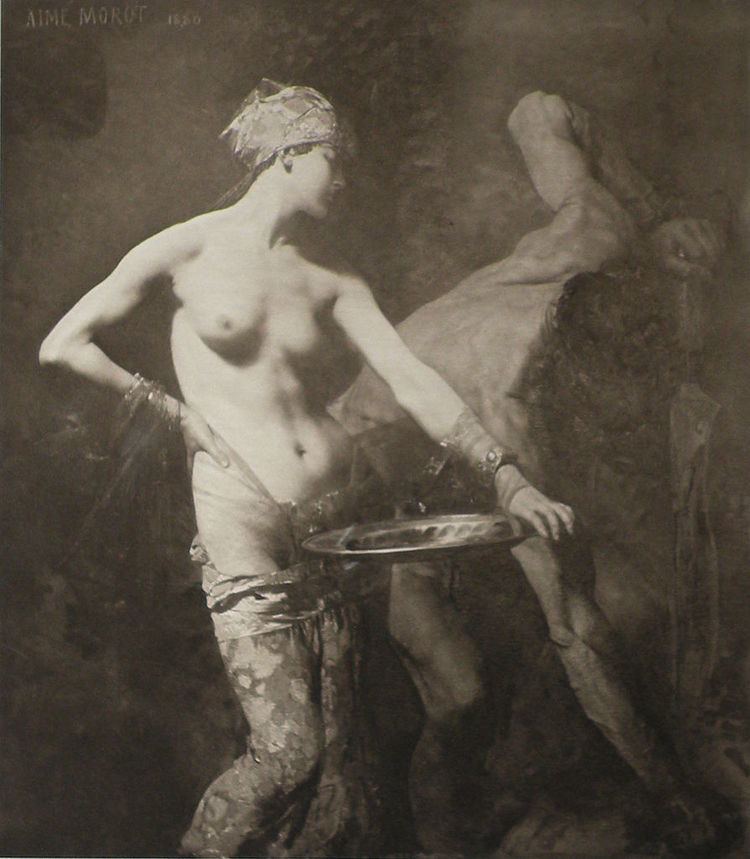
In 1900, he won a grand prix of the l'Exposition Universelle (Paris Exhibition) and in the same year became professor at the École Nationale Supérieure des Beaux-Arts in Paris. Henry Golden Dearth (Bristol, 1864), a bronze medal winner at the same Paris Exhibition of 1900, was one of his British students, as were Dawson Dawson-Watson (1864-1939) and James Whitelaw Hamilton (1860-1932). His American apprentice artists included Benjamin Foster (1852-1926), George Henry Bogert (1864-1944) and Herbert Haseltine (1877-1962).

In 1910, Morot ordered construction of Maison dite Ker Arlette in Dinard, a coastal village in North-east Brittany. He lived there until his death caused by a disease from which he had suffered for a long time on 12 August 1913. An obituary was published in the 16 August 1913 edition of L'Illustration.
Military paintings, battle scenes
Morot had been attached to the General Staff of the French Army, which had given him ample opportunity to study cavalry men and horses while they practised. To study the movement of the horses he used his eye as a camera by the use of a simple device that he could open and close rapidly in front of his eyes to better isolate the movements. This allowed him to vividly paint several historic cavalry charges from the Franco-Prussian War in 1870. Among the paintings exhibited at the Salon des Artistes Français were Cavalry charge at Rezonville (1886), 3ème Cuirassiers a Helsass Hausen (1887) and Reischoffen (1887, exhibited in Musée de l'Histoire de France (Versailles)) and Prisonnier! or the Charge of cavalry at Gravelotte (1888).
Society portraits and animals
After producing some extremely remarkable classical and figure paintings in the beginning of his career (e.g. Hériodiade (1880), Le Bon Samaritain (1880), Jésus de Nazareth (1883), Temptation of St. Anthony, Dryade (1884)) he went on to become a society portraitist. Among others he painted Madame Bertinot (1880), Madame Agache (1881), Comtesse de Fontarce (1885), Son Altesse Royale la Duchesse d'Alençon Duchess Sophie Charlotte in Bavaria, Madame Archdeacon-Boisseaux (1895), Madame Méring (1895), Baron Alphonse James de Rothschild (1898), the painter Édouard Detaille (1899), Monsieur Gustave Eiffel (1905), the Duc de Doudeauville, Madame Aymé Darblay (1902), Pastor Goulden (1906), and Frère et Soeur (Brother and sister), which was exhibited at the Salon de Paris in 1911. Morot contributed to the Salon until 1912.
Morot excelled in portraying animals, which appeared in many of his other paintings, such as the horses in his historic cavalry paintings, a donkey in Le bon Samaritain, a pig in Temptation of Saint Anthony, a snake in La Charmeuse, lions in Lion before his Prey and Reclining Lions, Rex and Au Tableau, tigres in Tigre and Deux Tigres Combattant, dogs in Mademoiselle Brice and Jacques Goldschmid and a cat in the painting of his daughter Denise with Cat (1899).
International travel
His visits to Spain inspired him to Spanish motives, such as the paintings of Toro Colante displayed at the Salon de Paris in 1885 and of which a gravure was published in Le Monde Illustré in 1887, and El Bravo Toro!. which was exposed in the Salon in 1884 and later featured the cover of Les Annales in 1913. These paintings were entirely painted from memory after Morot had visited a series of bull fights in Spain.
Aimé Morot loved hunting and travelled extensively, in 1889 to Morocco in the company of the French novelist and naval officer Pierre Loti, where he made several orientalist drawings. In 1893 he went to India for tiger hunting; he also visited Turkey, Syria and Abyssinia (Ethiopia), where he was refused the hunt on elephants and lions. In 1900 he visited Niger and French Sudan, where he did hunt and kill a large lion. This resulted in Au Tableau (1902), representing the return of the hunt with a killed lion being carried up on a river bank by Africans, which is in the Musée des Beaux-Arts in Nancy. Although he travelled widely, he produced few works in the Orientalism genre. Arabs attacking an English outpost was part of the collection of Mr. Salvador de Mendonça until 1892. Morot's Dessert Warrior and the watercolour Fantasia would have been inspired by his travels to Morocco.
Media
Most of Morot's work consists of oil paintings, but he also used other media. Aimé Morot was a member of the Société d'aquarellistes Français and submitted the watercolour Hallah to their 1888 exposition in Paris and painted the Battle of Reichshoffen in watercolour. He also painted the ceiling of the Grand Salon of the Hôtel de Ville in Nancy in 1902. Aimé Morot made various sculptures in marble and bronze. In 1905 he worked on a memorial for Jean-Léon Gérôme, which consists of a group representing Gérôme working on his Gladiator sculpture. This sculpture is exposed in the Jardin de l'Infante in one of the courts of the Louvre. At the same time he worked on a portrait of fellow painter Ernest Hébert for display at the Salon de Paris and was selected as a jury member for the next Salon in 1906.
Colour palette and painting technique
For his oil paintings on canvas, Aimé Morot had a preference for a colour palette consisting of silver white, zinc white, yellow ochre, red ochre, cadmium yellow, cadmium red, raw sienna, burnt sienna, cobalt blue, emerald green, rose madder, carmine lake and ivory black. His painting medium consisted of oil mixed with some turpentine or sometimes with copal. He would start his painting by making a rough outline of the entire subject on a well-dried oiled canvas using a brush or charcoal, then applied the paint. When the completed painting had dried for a long time, he finally applied light varnish.
